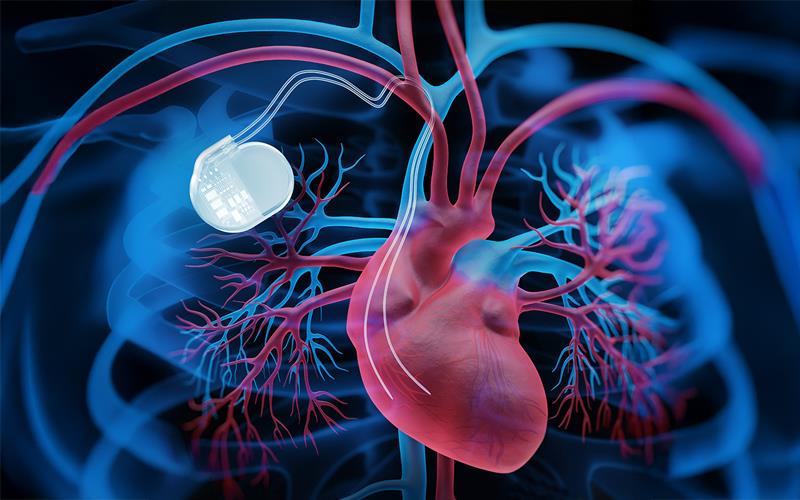Pacemaker implantation after TAVI linked to long-term poor outcomes





Pacemaker implantation after transcatheter aortic valve implantation (TAVI) was associated with a significantly worse prognosis in terms of all-cause and cardiovascular (CV) mortality, according to the SwissTAVI trial presented at EHRA 2025.
At 1 year, patients who underwent pacemaker implantation within 30 days after TAVI had a significantly higher risk of all-cause (hazard ratio [HR], 1.28; p<0.001) and CV (HR, 1.39; p<0.001) deaths compared with those who did not undergo implantation. [Badertscher, et al, EHRA 2025]
After adjusting for age, sex, type of valve, year of TAVI, and several other cardiac risk factors, mortality rates were consistently higher in the pacemaker group compared with the nonpacemaker group (adjusted HRs [adjHRs] 1.15; p=0.002 [all-cause] and 1.25; p=0.006 [CV]).
Similar results were seen at 5- and 10-year follow-ups, which showed a significantly higher all-cause mortality rate in patients with a pacemaker (adjHRs, 1.25 [5 years] and 1.16 [10 years]; p<0.001 for both) compared with those without a pacemaker.
Patients in the pacemaker group also had a higher rate of CV death at 5 and 10 years (adjHRs, 1.24; p<0.001 and 1.18; p=0.10, respectively) than those in the nonpacemaker group.
Furthermore, patients requiring a pacemaker after TAVI were more likely to have a decline in left ventricular ejection fraction of ≥10 percent (adjHR, 1.84; p<0.001) and NYHA class III or IV symptoms (adjHR, 1.27; p<0.001) at 1 year compared with those who did not require a pacemaker.
Compared with patients who received a pacemaker prior to TAVI, those who received a pacemaker after TAVI also had a significantly higher rate of all-cause mortality (HR, 1.39; p<0.001) but not CV death (HR, 1.28; p=0.133).
The SwissTAVI study analysed 13,360 patients (median age 82 years, 42 percent female) who underwent TAVI at 19 centres in Switzerland between 2011 and 2022. Patients included were those alive within 30 days after TAVI. They were stratified into three groups: patients without a pacemaker (n=9,966) and those with a pacemaker prior to (n=1,366) and after (n=2,028) TAVI.
“Overall, in this large nationwide registry, patients receiving pacemaker within 30 days after TAVI had significantly higher rates of all-cause and CV death for up to 10 years,” said lead author Dr Patrick Badertscher from University Hospital Basel, Basel, Switzerland.
Badertscher also noted that novel pacemaker implant techniques, such as conduction system pacing, may result in different outcomes. However, this has yet to be demonstrated in the TAVI population.
Invited discussant Dr Jens Cosedis Nielsen from Aarhus University Hospital, Aarhus, Denmark, who is unaffiliated with the study, commented that “the [SwissTAVI] data support the conduct of new pacing modalities studies to assess whether it will improve prognosis in patients requiring a pacemaker after TAVI.”